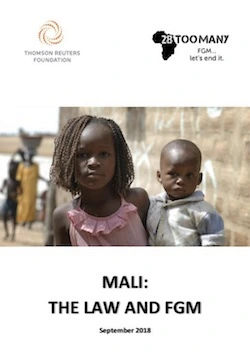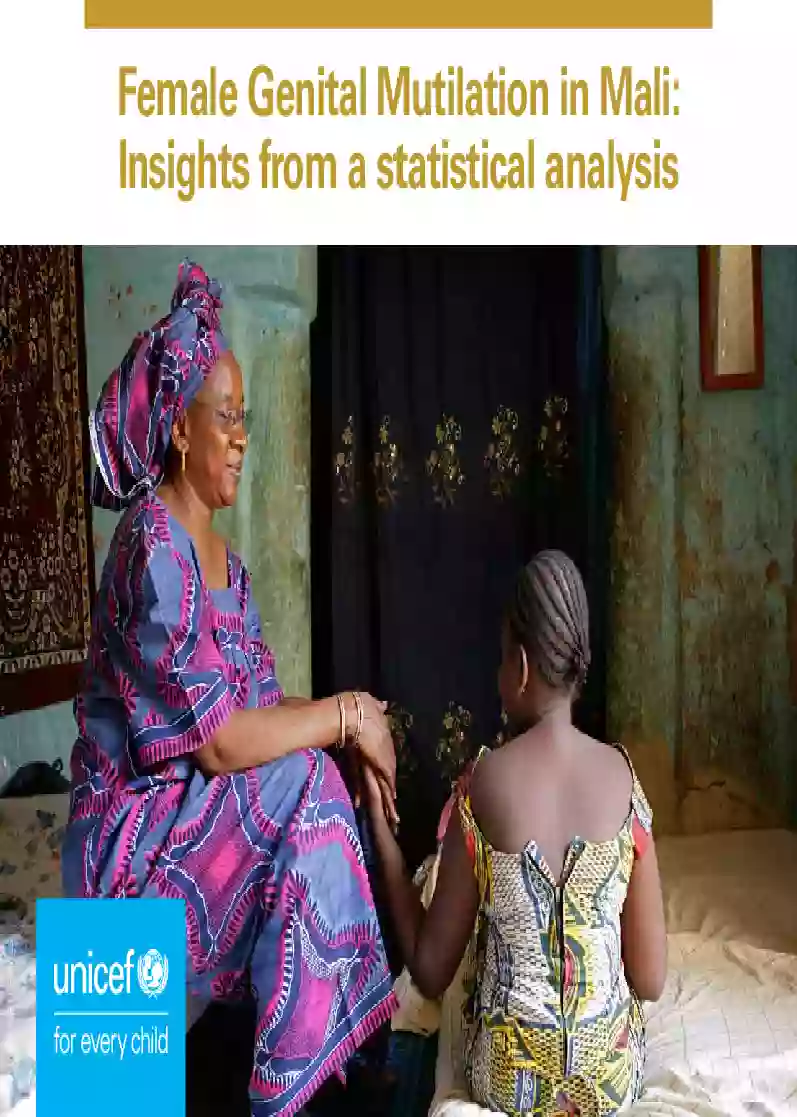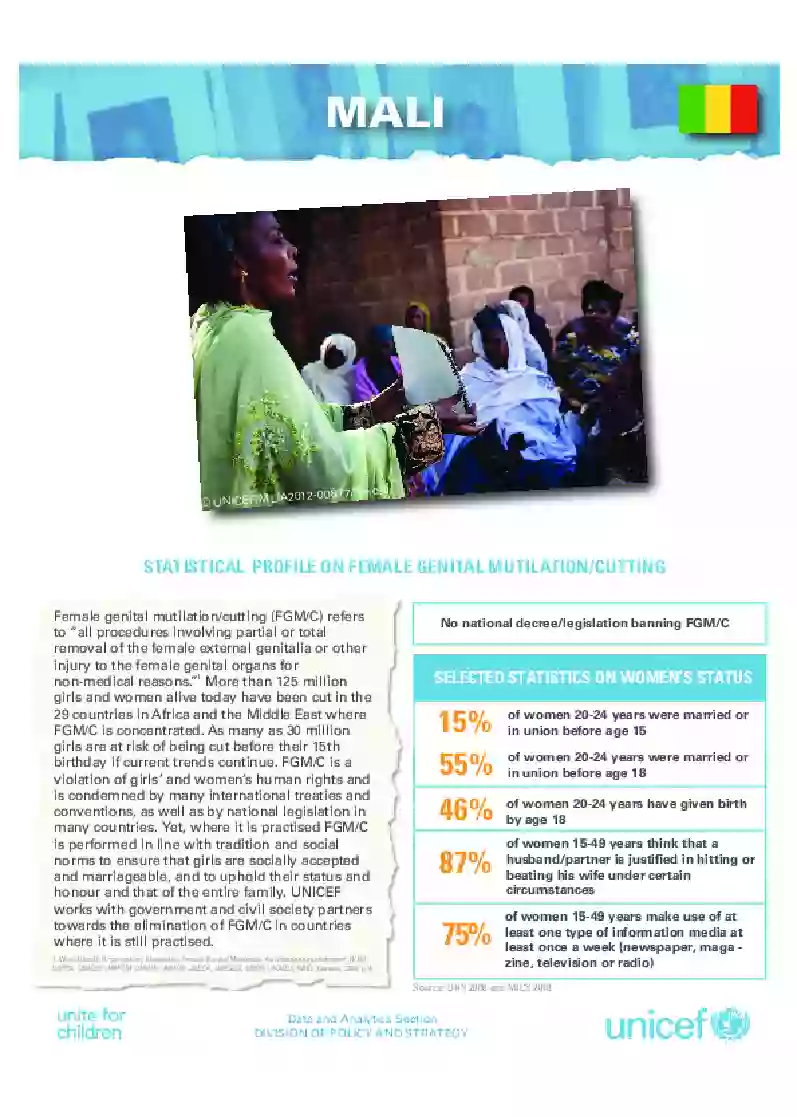Home | Research & Resources | Mali
Key Findings
The prevalence of FGM/C among women aged 15–49 in Mali is 88.6%.
75.8% of women and 74.4% of men aged 15–49 believe that FGM/C should continue.
Geography
The regions with the highest prevalence are in the south and south-west of the country
Age
FGM/C is most likely to take place before the age of 5
Type
‘Cut, flesh removed’ is the most common type of FGM/C practised
Agent
88.8% of women aged 15–49 were cut by traditional cutters
Distribution of FGM/C across Mali
The regions with the highest prevalence of FGM/C are in the south and south-west of the country: Sikasso (96.0%), Koulikoro (95.9%) and Kayes (94.7%).
It should be noted that the figure of 88.6% for the overall prevalence of FGM/C in Mali does not include the rural regions of Kidal, which could not be surveyed. Although the effect of this on the overall prevalence is likely to be small, the results should be interpreted with caution.
70% of women and 68% of men aged 15–49 believe that FGM/C is a requirement of their religion, while 75.8% of women and 74.4% of men aged 15-49 believe that the practice should continue.
The DHS 2018 does not provide data on FGM/C prevalence according to people’s ethnic or religious groups. In the DHS 2012–2013, the ethnic group with highest prevalence of FGM/C was the Sarakolé/Soninké/Marka, at 96% of women aged 15–49, and the ethnic group with the lowest prevalence was the Tamachek/Bélla, at 62.7%. Although only a small number of women from the Tamachek/Bélla were surveyed, it is worth noting that in countries such as Burkina Faso there is also a low prevalence of FGM/C among the Bélla.
FGM/C in Mali is practised by people of all the major religions: in 2012–2013, 92.8% of Muslim women aged 15–49 had been cut, as had 77.2% of Animiste women and 65.2% of Christian women. Of women who did not adhere to any major faith, 91.4% had undergone FGM/C.
The results of the DHS 2018 cannot be compared directly with those of the DHS 2012–2013, since in the latter it was not possible to survey the three northern-most regions (Tomboctou, Kidal and Gao) due to armed conflict there. It is possible, however, to make cautious comparisons with the DHS 2006, which covered the entire country. In 2006, the overall prevalence of FGM/C was found to be 85.2%, suggesting that the prevalence of the practice has remained broadly constant in recent years.
Trends in FGM Prevalence in Mali
In some situations, seemingly small shifts in the overall prevalence can mask more striking changes in prevalence that can be seen when the data is broken down by age group. In the case of Mali, however, the prevalence is broadly the same across all age groups, with no distinct trend towards a lower prevalence in younger women.
FGM/C Legislation in Mali
There is currently no national legislation in Mali that specifically criminalises and punishes the practice of FGM/C. There have been many attempts over the years to introduce a ban on FGM/C; most recently, in July 2017, a draft law to address gender-based violence (including FGM/C) was put forward, although it faces objections and has yet to be passed.
Development Indicators
Population Growth
21,190,881 (as at 8 June 2020), with a 2.97% growth rate (2022 est.)
Infant Mortality
62 deaths per 1,000 live births (2019)
Maternal Mortality
562 deaths per 100,000 live births (2017)
SDG Gender Index
Ranked 133 out of 144 countries with a score of 47.6% (2022)


_english.webp)
.webp)
.webp)
_french.webp)
_french_cover.webp)
_french_cover.webp)
_cover.webp)

_french_cover.webp)
_cover.webp)
.webp)

_french.webp)
_french.webp)
_cover.webp)
